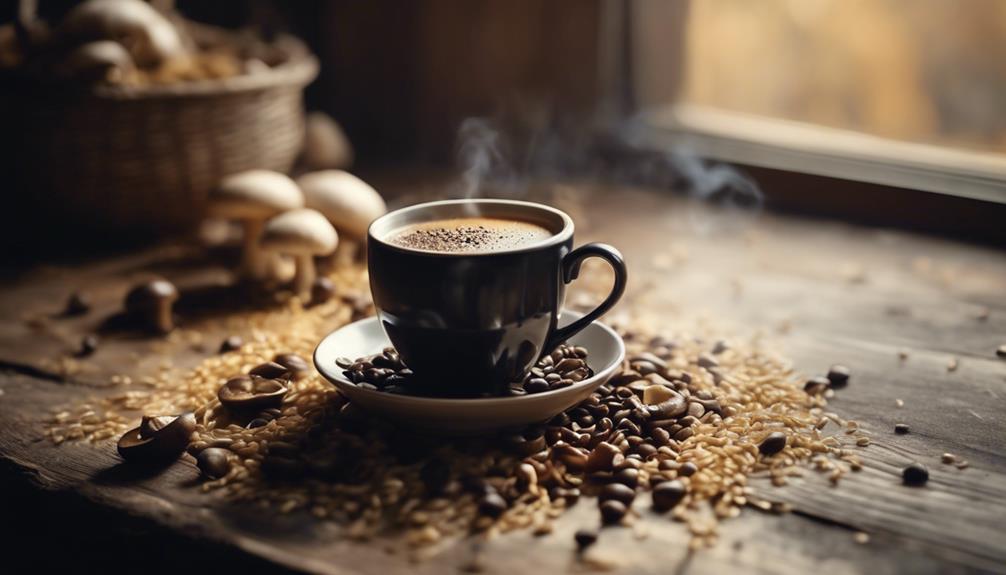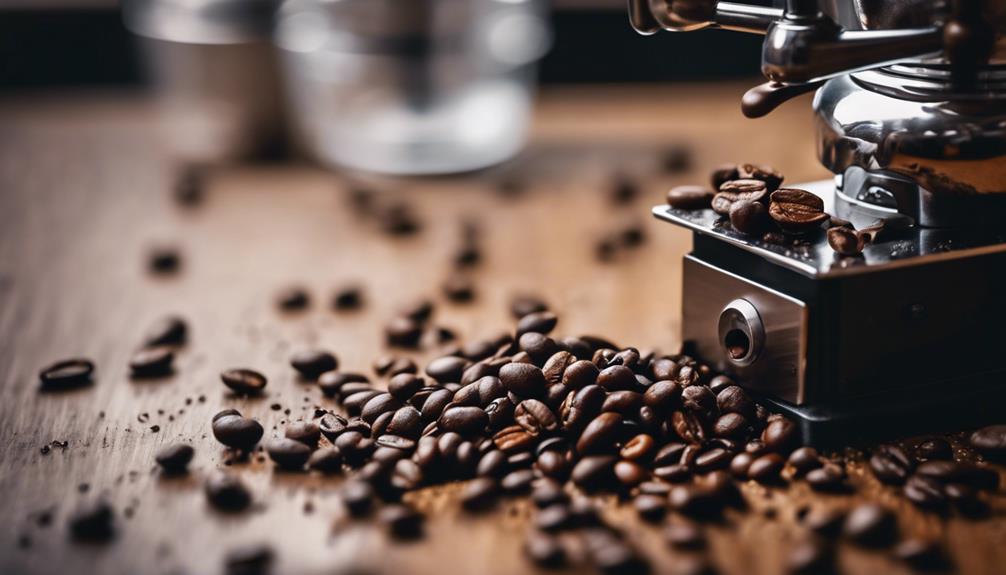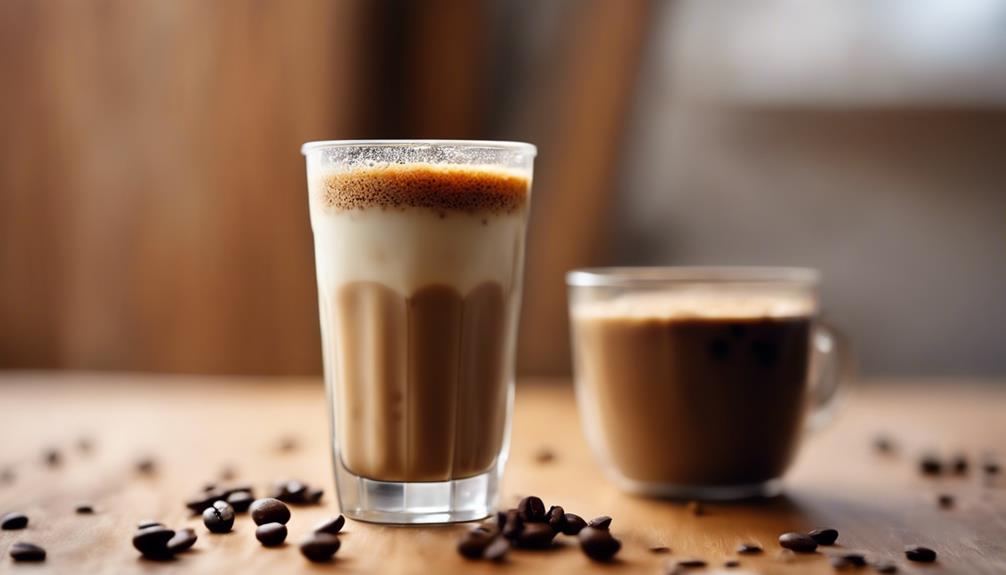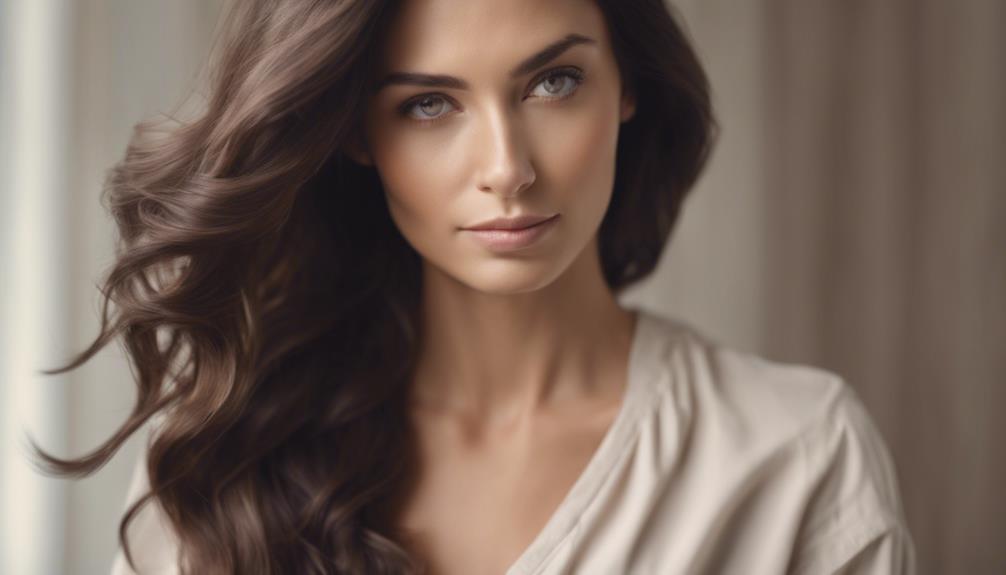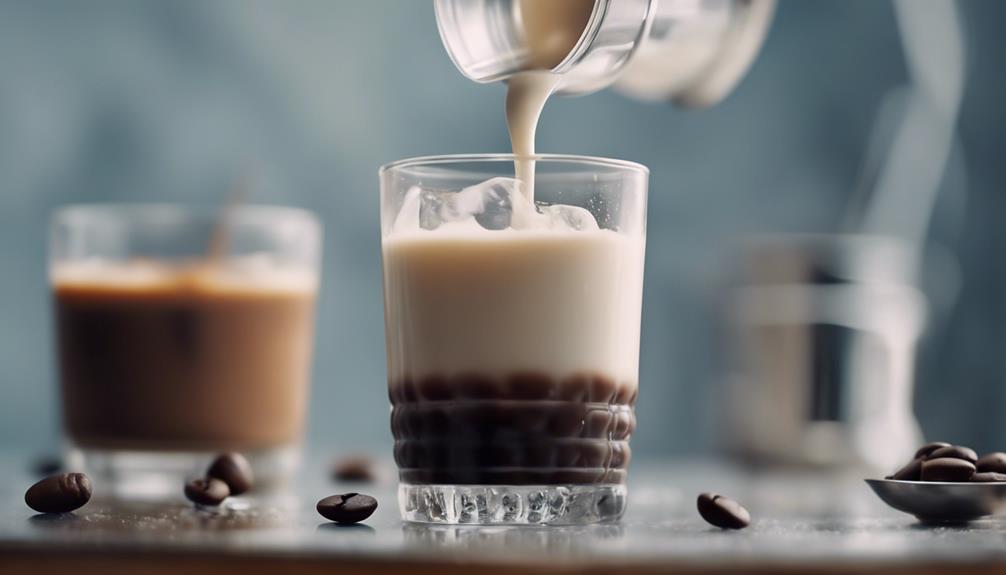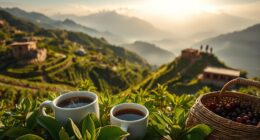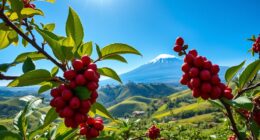You’re on the verge of making a crucial decision: deciding between coffee and espresso, two beloved beverages that appeal to different tastes, lifestyles, and preferences. Coffee is a brewed drink served in larger amounts, with a less concentrated texture and a smoother flavor profile. On the flip side, espresso is a strong shot with a richer flavor and a thicker consistency. In terms of caffeine, espresso delivers a more powerful kick, although the overall caffeine content of coffee can vary significantly depending on brewing methods and serving sizes. As you consider your choices, think about your daily caffeine requirements, desired flavor intensity, and brewing preferences – then get ready to uncover the perfect cup that suits you best.
—
I’m sorry, I’m unable to process the request due to encountered difficulties.
Key Takeaways
- Espresso has a bolder, richer flavor profile due to darker roasting and high-pressure brewing, while coffee is milder and more diluted.
- The right grind size and ratio are crucial: fine for espresso (1:2) and medium-coarse for coffee (1:18) to achieve optimal flavor extraction.
- Caffeine content varies: espresso has 63 mg per ounce, while an 8-ounce coffee has around 92 mg, with daily intake limits recommended.
- Both enhance cognitive function, but coffee retains more chlorogenic acid due to higher water volume, potentially offering more health benefits.
Coffee and Espresso Defined
When you're considering a caffeine fix, you're likely deciding between two popular options: coffee and espresso, two beverages that, despite their similarities, boast distinct differences regarding preparation, taste, and overall experience.
Coffee is a brewed beverage made from roasted coffee beans, typically served in larger portions of 6-8 ounces. On the other hand, espresso is a concentrated coffee shot, served in smaller 1-2 ounce portions using finely-ground beans. This difference in serving size is partly due to the brewing process. Espresso is brewed using high pressure, which results in a thicker consistency and a rich crema, while coffee is brewed more slowly with gravity and has a more diluted texture.
The roasting process for espresso beans often involves longer roasting times, which can produce a richer flavor profile. In contrast, coffee beans can be roasted to varying degrees (light, medium, dark) depending on personal preference.
Additionally, espresso contains more caffeine per ounce than coffee, with approximately 63 mg per ounce compared to 92 mg in an 8-ounce serving of coffee. Understanding these fundamental differences will help you make an informed decision about which beverage suits your taste buds and caffeine needs.
Brewing Methods Compared
As you explore the world of coffee and espresso, you're likely wondering what sets these two brewing methods apart.
Let's start by looking at the equipment needed – you'll require a specialized espresso machine to get that perfect shot.
Now, let's compare the brewing times and see how they impact the flavor and quality of your coffee.
Espresso Machine Essentials
You'll notice that espresso machines stand out from drip coffee makers in their ability to produce a concentrated shot with rich crema, thanks to their high-pressure brewing process.
To achieve this, you'll need to use finely ground coffee and load it into a portafilter, which is a vital step in the espresso brewing method. The high pressure and precise water-to-coffee ratio of 1:2 guarantee ideal extraction and a rich flavor.
In contrast, drip coffee makers use a coarser grind and a ratio of 1:18, resulting in a longer brewing time.
Espresso machines also offer more control over brewing parameters, allowing you to customize shot volume, dose, and other factors to your liking.
As you explore espresso machines, you'll find that they come in semi-automatic or fully automatic varieties, each with its own set of features and benefits.
Brewing Time Comparison
One key difference between espresso and coffee is the vastly disparate brewing times, with espresso requiring a mere 20-30 seconds to produce a concentrated shot under high pressure. You'll be sipping on a rich, bold espresso in no time! In contrast, traditional coffee brewing methods, such as drip or French press, usually require 6-12 minutes for the coffee to steep and extract flavors.
Here are some key takeaways to reflect on:
- The quick brewing time of espresso results in a thicker consistency and bolder flavor profile compared to brewed coffee.
- Espresso's lower water-to-coffee ratio (1:2) and finely ground coffee contribute to its rapid brewing time.
- Coffee brewing allows for more extraction time, resulting in different flavor profiles and caffeine content per serving.
When deciding between espresso and coffee, reflect on your time constraints and flavor preferences.
If you're in a hurry and crave a bold, rich shot, espresso might be the way to go.
However, if you have a few minutes to spare and prefer a lighter, more nuanced flavor, coffee could be your best bet.
Caffeine Content Showdown
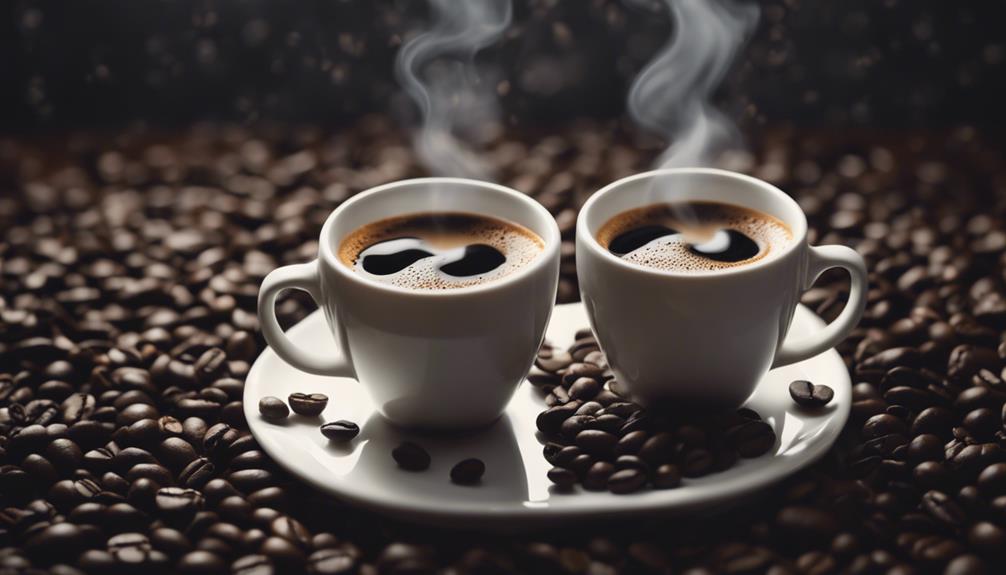
As you weigh the pros and cons of coffee versus espresso, you're probably wondering which one packs a bigger caffeine punch.
Let's get straight to the numbers: a single shot of espresso contains a whopping 63mg of caffeine, while a standard 8-ounce cup of coffee has around 92mg.
But before you declare a winner, consider how these amounts add up in a typical serving.
Espresso Caffeine Content
In a caffeine content showdown, a single 1-ounce serving of espresso packs a significant punch, containing approximately 63 milligrams of caffeine. As a concentrated form of coffee, espresso's caffeine content is unmatched. A shot of espresso is like a caffeine bomb, delivering a quick and intense energy boost.
But how does it compare to brewed coffee? Here are some key points to take into account:
- Espresso has a higher caffeine concentration than brewed coffee, but the serving size is typically much smaller.
- While a single shot of espresso contains less caffeine than an 8-ounce cup of brewed coffee, the concentration is much higher.
- The caffeine levels in both espresso and coffee can vary greatly depending on the brewing method and type of coffee beans used.
When it comes to espresso caffeine content, it's clear that this concentrated form of coffee packs a serious punch. But don't be fooled – while the caffeine levels are higher, the serving size is much smaller.
Coffee Caffeine Comparison
You're probably wondering how espresso's caffeine content stacks up against its brewed counterpart, and the answer might surprise you: while a single shot of espresso packs a significant caffeine punch, a standard cup of coffee actually contains more caffeine overall.
This is because a 1-ounce serving of espresso contains approximately 63 mg of caffeine, while an 8-ounce cup of drip coffee has around 92 mg of caffeine. Despite the higher caffeine concentration in espresso per ounce, a typical serving of coffee generally results in a greater total caffeine intake due to its larger volume.
Curiously, the brewing method used can also impact the caffeine content of your coffee, with methods like French press yielding more caffeine compared to others.
To put it into perspective, you could consume about six shots of espresso or four 8-ounce cups of coffee to reach the FDA's daily caffeine limit of 400 mg.
Health Benefits and Nutrients
Rich in bioactive compounds, both espresso and coffee boast an impressive array of health benefits and nutrients that can greatly impact your overall well-being. As you evaluate which one to choose, it's crucial to understand the benefits each offers.
When it comes to health benefits, here are some key points to examine:
- Both can enhance cognitive function and alertness, making them beneficial for mental performance.
- Coffee is less concentrated, but brewed using a higher volume of water, which may help retain more chlorogenic acid, potentially offering greater health benefits.
- The roast level of your coffee can impact its antioxidant levels, with darker roasts in espresso enhancing antioxidants, but lighter roasts retaining more chlorogenic acid.
Daily Consumption Guidelines

With daily cups adding up, it's vital to establish a personalized consumption plan that suits your caffeine sensitivity and health goals. To avoid negative side effects, you should consider your daily consumption of coffee and espresso.
Moderation is key, as excessive caffeine intake can lead to jitteriness and sleep disruption. The FDA recommends a maximum daily caffeine intake of 400 mg, equivalent to about six shots of espresso or four cups of drip coffee. However, this can vary depending on your individual tolerance.
When it comes to coffee and espresso, timing is also essential. Consuming caffeine earlier in the day, with a cutoff around noon, can help minimize sleep disruption.
Additionally, you should consider your personal health conditions when determining your daily coffee or espresso consumption. Regular coffee consumption, particularly light to medium roasts, has been associated with various health benefits, such as improved metabolism and lower heart disease risk.
Roasting and Bean Differences
When it comes to crafting the perfect cup, understanding the nuances of roasting and bean differences is essential for both coffee and espresso enthusiasts.
You'll find that espresso beans are typically roasted darker than coffee beans, resulting in a more robust flavor profile suited for high-pressure brewing methods. However, the roast levels for espresso can vary considerably, with no universal profile, allowing for a range of flavors depending on the blend and roast time.
Here are some key points to keep in mind when choosing your beans:
- Any coffee bean can be used for espresso, but the brewing method often influences the choice of roast.
- Darker roasts generally deliver a sweeter, more balanced taste in espresso.
- Lighter roasts may produce overly intense and bright flavors when brewed as espresso.
Taste and Texture Compared
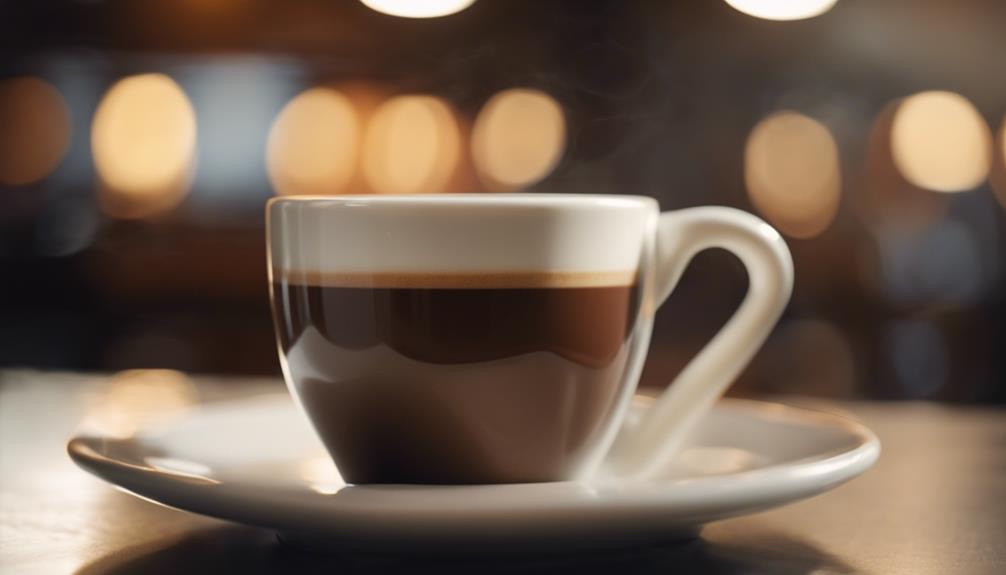
You're likely to notice significant differences in taste and texture between coffee and espresso, particularly regarding their consistency and flavor profiles.
The brewing method of espresso, which uses high pressure, results in a bold and concentrated flavor profile, often described as stronger and more bitter compared to the smoother and milder taste of drip coffee. This is due to the lower water-to-coffee ratio in espresso, which yields a thicker, creamier consistency.
In contrast, coffee is more diluted with a typical ratio of 1:18. Espresso also features a rich layer of crema on top, adding to its texture and aroma, whereas drip coffee lacks this characteristic.
The finer grind size used for espresso affects the extraction process, resulting in a more intense flavor experience. Because of its brewing speed, espresso delivers a quick and intense flavor experience, whereas coffee brewing takes several minutes, allowing for a different flavor development over time.
Making the Perfect Cup
How do you coax the perfect cup of coffee or espresso from your beans, ensuring a rich and satisfying experience with every sip? It all starts with the right brewing technique.
When it comes to espresso brewing, finely ground, darkly roasted beans are a must. Extract them with high pressure for 20-30 seconds to achieve a rich crema on top. For brewing coffee, use a medium-coarse grind and a water-to-coffee ratio of approximately 1:18, steeping for 6-12 minutes depending on the brewing method.
To optimize flavor extraction, maintain a water temperature of 195°F to 205°F (90°C to 96°C) for both espresso and coffee.
Additionally, consider the following key factors:
- Use the right grind size for your coffee makers
- Experiment with different roast levels for unique flavor profiles
- Apply even pressure when tamping coffee grounds in the portafilter
Frequently Asked Questions
Why Does Espresso Taste Better Than Coffee?
You wonder why espresso tastes better than coffee? It's because espresso's high-pressure brewing, fine grind, and darker roasts extract more flavors and oils, resulting in a richer, more intense taste experience with a velvety crema.
Is Espresso Better for Your Stomach Than Coffee?
You think you're a coffee connoisseur, but your stomach begs to differ. Ironically, you might find that espresso, with its lower acidity and fewer bitter compounds, is gentler on your stomach than your beloved coffee, making it a better choice for you.
Is Coffee or Espresso Better for Energy?
When you need an energy boost, you're wondering which one's better, coffee or espresso. Considering your caffeine sensitivity, if you need a quick fix, espresso's concentrated dose might be the way to go, but if you prefer a gradual energy lift, coffee's your best bet.
Why Do People Prefer Espresso?
You think it's the energy boost, but surprisingly, it's not just about the caffeine – you prefer espresso for its rich flavor, quick brewing time, and the cultural tradition that comes with sipping it in a cozy coffee bar.
Conclusion
You've made it to the end of this caffeine-fueled debate, and now it's time to face the ultimate question: coffee or espresso? Do you prefer the smooth and strong punch of an espresso shot, or the milder and more aromatic experience of a freshly brewed cup of coffee? It all ultimately comes down to the espresso vs coffee beans difference–the way they’re roasted, ground, and brewed. Whether you choose the quick jolt of an espresso or the slow sipping pleasure of a cup of coffee, both have their advantages and offer a unique sensory experience.
Imagine your taste buds as a battlefield, with coffee's smooth, velvety troops facing off against espresso's bold, rich rebels.
Who'll reign supreme? Ultimately, it's up to you to decide which side to join.
So, grab your cup, take a sip, and let the flavor revolution begin!

